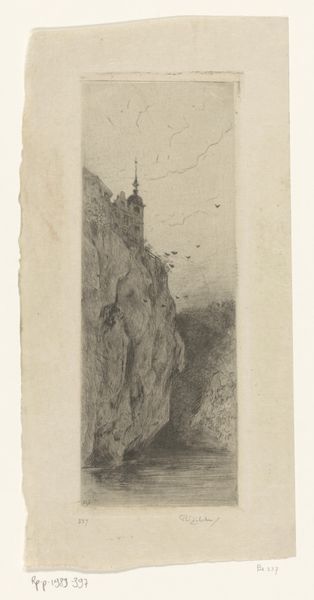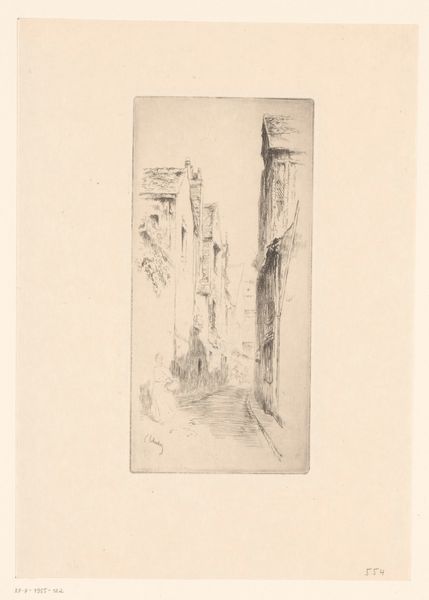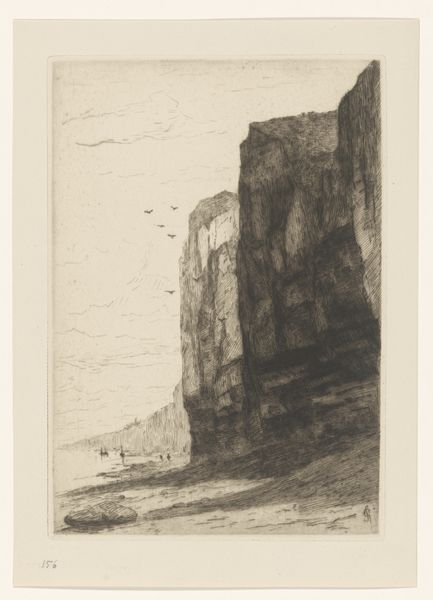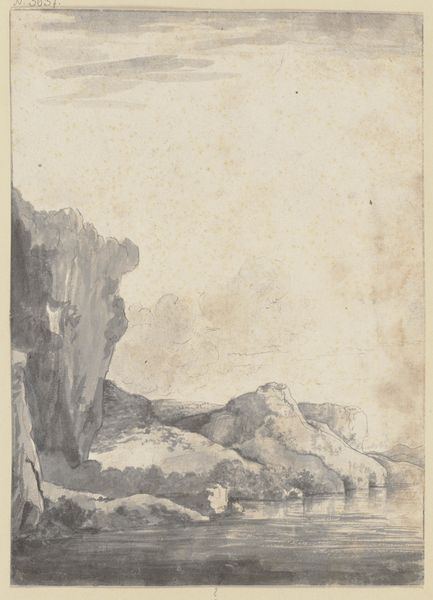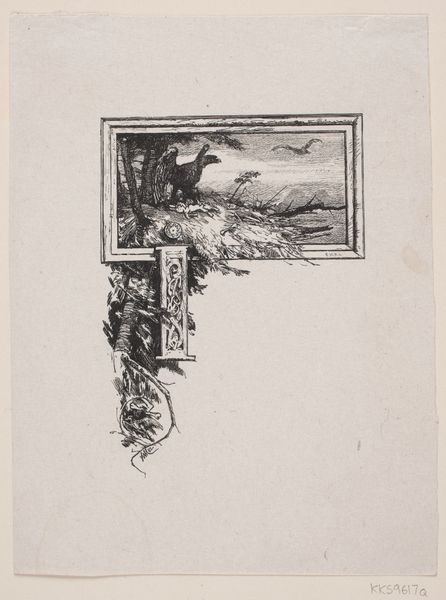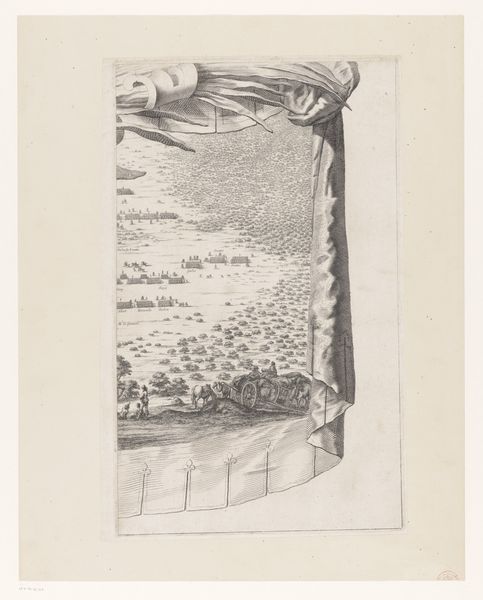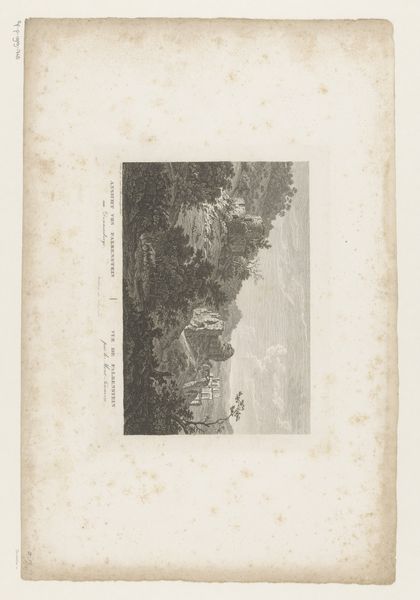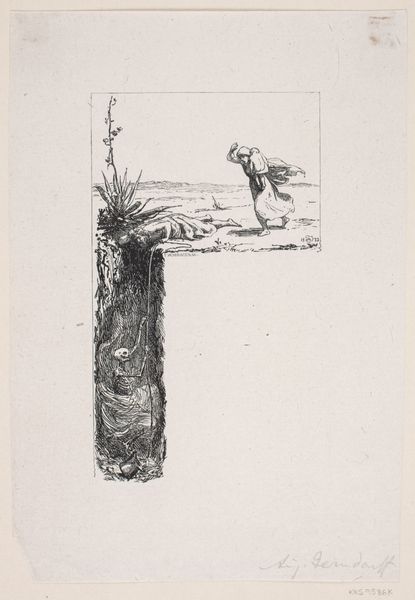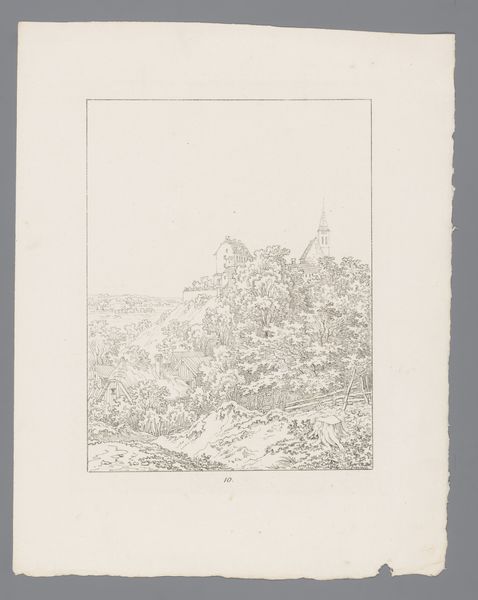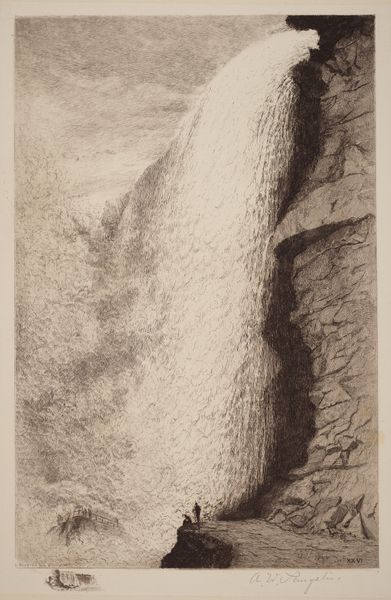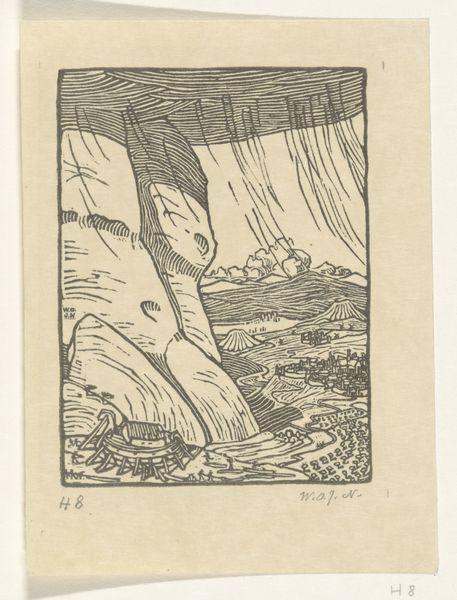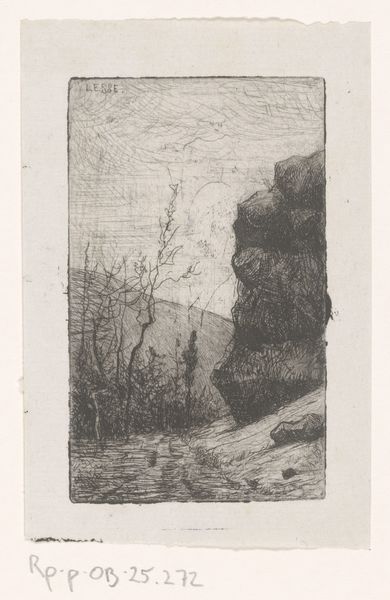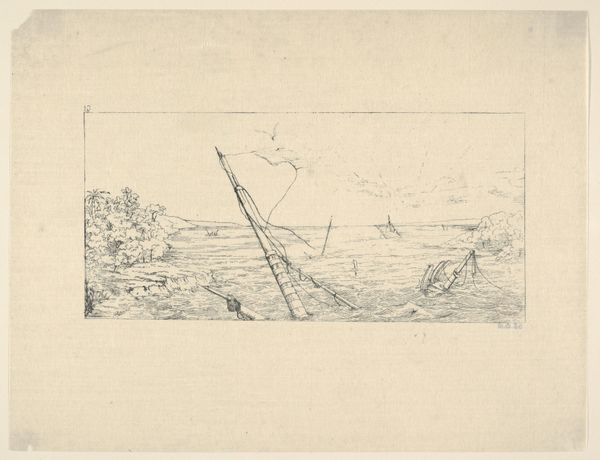
drawing, print, etching, paper, ink, engraving
#
drawing
# print
#
etching
#
landscape
#
paper
#
ink
#
engraving
Dimensions: 145 mm (height) x 98 mm (width) (bladmaal)
Editor: Here we have an etching, "Illustration til "Makreldorg"" made sometime between 1829 and 1899 by H.P. Hansen. It's mostly ink on paper, depicting a rocky seascape. The rendering of the rock texture is quite intriguing. What jumps out at you about this work? Curator: Considering the context of its production, what I see most clearly are the processes involved. The etching, the printing, the likely reproductive purpose... These all point to a material reality often obscured by talk of artistic "genius." Look closely at the lines, the varying densities achieved through the etching process. Editor: Yes, the details achieved with etching and engraving is quite remarkable, creating the details of the rocks. What do you make of the incomplete image on the paper? Curator: That’s interesting, isn’t it? It speaks to the industrial aspect of art-making at the time. These illustrations weren't precious objects, but products of a workshop intended for mass consumption. Consider how this particular print, this "flaw," allows us to see the physical, labored process of image production. It is no longer a window on the landscape, but an object whose construction is evident. Editor: I never really considered that these prints might have had more utilitarian goals than high art. How does its origin as an illustration impact how we understand it? Curator: Precisely! Understanding this work as an illustration changes our relationship to it. Instead of purely aesthetic appreciation, we're drawn to consider its original function, its relationship to the text it accompanied, the printing and publishing industry that supported its creation, and ultimately its intended audience and the economic systems at play. It's less about what the landscape depicts and more about *how* that depiction came into being and what purpose it served. Editor: That's a very different approach from what I would have expected! It really makes you consider all of the labor and decisions that went into its existence. Curator: Absolutely, and that, for me, is where the true value lies. Seeing art as a product of material conditions, of labor and production.
Comments
No comments
Be the first to comment and join the conversation on the ultimate creative platform.
